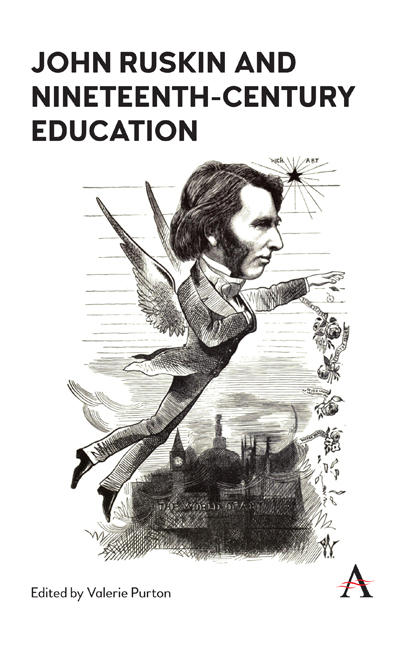Book contents
- Frontmatter
- Contents
- List of Figures
- Foreword
- Introduction
- Section A Changing the World
- Chapter 1 ‘An Enormous Difference between Knowledge and Education’: What Ruskin Can Teach Us
- Chapter 2 ‘Souls of Good Quality’: Ruskin, Tolstoy and Education
- Chapter 3 ‘To Teach Them How to Dress’: Ruskin, Clothing and Lessons in Society
- Chapter 4 Mad Governess or Wise Counsellor? Sesame and Lilies Revisited
- Section B Libraries and the Arts
- Section C Christianity and Apocalypse
- Notes on Contributors
- Index
Chapter 3 - ‘To Teach Them How to Dress’: Ruskin, Clothing and Lessons in Society
from Section A - Changing the World
Published online by Cambridge University Press: 25 July 2018
- Frontmatter
- Contents
- List of Figures
- Foreword
- Introduction
- Section A Changing the World
- Chapter 1 ‘An Enormous Difference between Knowledge and Education’: What Ruskin Can Teach Us
- Chapter 2 ‘Souls of Good Quality’: Ruskin, Tolstoy and Education
- Chapter 3 ‘To Teach Them How to Dress’: Ruskin, Clothing and Lessons in Society
- Chapter 4 Mad Governess or Wise Counsellor? Sesame and Lilies Revisited
- Section B Libraries and the Arts
- Section C Christianity and Apocalypse
- Notes on Contributors
- Index
Summary
Like the Bible, which exerted a strong influence on him, John Ruskin's writing is substantial in volume, contains apparent contradictions, and is designed to change and improve lives by sharing knowledge, that is, by teaching. Steeped in biblical models, Ruskin understood the importance of parables and stories as a means to connect, to pass on a lesson, and thus to inspire. He was skilled at using vivid, and often deeply personal, narratives to speak directly to the diverse individuals who formed his many audiences. He knew the perception of a shared human moment, a common experience, could help others to glimpse and share his vision of a possible future; verbal vignettes, extended metaphors, anecdotes and parables drawing on specific moments of human experience became his dominant mode of expression and communication. This helped make him an exceptionally engaging educator. In the same way that the Bible can be mined for particularly apt verses to support an argument, so too Ruskin's often gleefully contradictory writing can be broken into the equivalent of verses and extracted to serve a point. This chapter focuses on just such a specific extracted element and uses it to present an argument: that Ruskin utilizes textiles to teach. References to cloth and clothing are scattered across his oeuvre and, in his hands, these allusions become a means of educating his audiences, so they might come to share and help to achieve his vision of a better society.
Such pedagogical use of textiles as a recurring image employed to connect on an intellectual and emotional level is in keeping with his biblical model. The first recorded parable offered by Jesus – and one of the few to appear in all three synoptic gospels – is offered in the Gospel of Matthew as: ‘No man putteth a piece of new cloth unto an old garment, for that which is put in to fill it up taketh from the garment, and the rent is made worse.’ The lesson is simple, and it is easily understood: if a piece of new fabric is used to patch a hole, it will soon tear from the stitches, making an even larger hole in the original fabric.
- Type
- Chapter
- Information
- John Ruskin and Nineteenth-Century Education , pp. 49 - 68Publisher: Anthem PressPrint publication year: 2018



